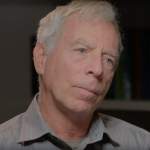Class Divide Premiers October 3rd on HBO
The thought-provoking documentary Class Divide is a timely look at the widening divide between the “haves” and “have nots.” Young people on both sides of the gap offer unique and honest insights that challenge common perceptions about inequality today.
In the final part of their trilogy about economic forces affecting ordinary people, director Marc Levin and producer Daphne Pinkerson (HBO’s Schmatta: Rags to Riches to Rags and Hard Times: Lost on Long Island) explore the effects of hyper-gentrification and rising economic disparity in one New York City neighborhood, which can be seen as a microcosm of the socioeconomic imbalances across the country, and the world. The film bears witness to the profound effects of gentrification and stagnant class mobility on young people who share a West Chelsea community — yet live in very different worlds — as they try to navigate this rapidly changing landscape.
At the intersection of West 26th Street and 10th Avenue in New York City, two communities are separated by much more than a boulevard. On one side are Avenues: The World School, an elite, state-of-the art private school with a $40,000-plus annual price tag, and multimillion-dollar luxury condos. On the other are the Elliott-Chelsea public-housing projects, home to thousands of underemployed and underserved residents mostly living below the poverty line.
Eight-year-old Rosa looks out from the housing projects to the other side of the street, where the children of privilege question how they landed on top. “My family is poor because we live in the projects,” she says. “I don’t have what I want, necessarily, but I do have people that I love.”
The for-profit Avenues: The World School, which opened in 2012, aims “to prepare children for international life.” This private school attracts children from New York’s 1% at an annual cost of more than $40,000. “In this neighborhood, I don’t think I can name five people who make over $40,000,” says Elliott-Chelsea resident Hyisheem. For a community with an unemployment rate of 50%, where an average family of four’s yearly income is roughly half the school’s tuition for a single student, living across from Avenues can be “like a tease and a smack in the face.”
Avenues is just one example of the way the neighborhood has been dramatically transformed. The High Line, a once-abandoned elevated railroad track, was reborn and turned into a wildly popular public park in 2009. Attracting five million people a year, The High Line has transformed a once-gritty area into the hottest neighborhood in NYC’s high-end real-estate market. “Every building is trying to outdo each other,” explains Community Board Committee co-chair Joe Restuccia.
However, many buyers in this current wave of gentrification seem to have no desire to integrate into the established lower-income community. Almost 40% of high-end residences have been sold to foreign or anonymous clients, and the average rent for Chelsea apartments has risen almost ten times faster than Manhattan as a whole, ousting many who can’t afford to keep up. “I just don’t understand why the old can’t be with the new,” says Yasmin Rodriguez, a lifelong West Chelsea resident and parent who is rapidly being priced out of her own neighborhood. “I have so much history here.”
Young people on both sides of the street struggle with the juxtaposition of “haves” and “have nots” and what those designations mean for their uncertain futures. On one side, the kids who live in Elliott-Chelsea housing bear witness to rising inequality, and the complex and intersecting issues of public education, affordable housing, immigration and employment opportunities that affect their lives.
While Avenues students seem to have it made, some worry they will never match their parents’ achievements, while being acutely aware that their status wasn’t earned. Avenues student Yasemin says, “Most people work hard,” but also acknowledges the obvious, asking, “Did you have that privilege awarded at birth, or did you not?” Across the street, many feel that Avenues is excluding the community by failing to accept scholarship students from public housing. “It’s not racism, it’s classism,” argues Hyisheem. “It’s the fact that you don’t have what they have.”
After meeting Elliott-Chelsea resident Juwan, Yasemin is inspired to create “115 Steps,” a photo and audio project featuring kids from both sides of the street. When Avenues opens its doors to Rosa and others for a tour, the hope in their faces is undeniable. The school’s decision to accept its first student from Elliott-Chelsea public housing speaks to a willingness to confront the imbalance between rich and poor in their own backyard, and is a hopeful sign that with continued conversation between students and community leaders, change can be embraced, yet managed in a way that preserves what makes New York City so unique: a mix of all kinds of humanity.
The High Line is a “place where everybody, regardless of background, regardless of income, can come together,” explains its co-founder, Joshua David. For kids on both sides of the street, this philosophy will be tested in a neighborhood where hyper-gentrification has brought two communities into close proximity, but with greater disparity than ever before.

